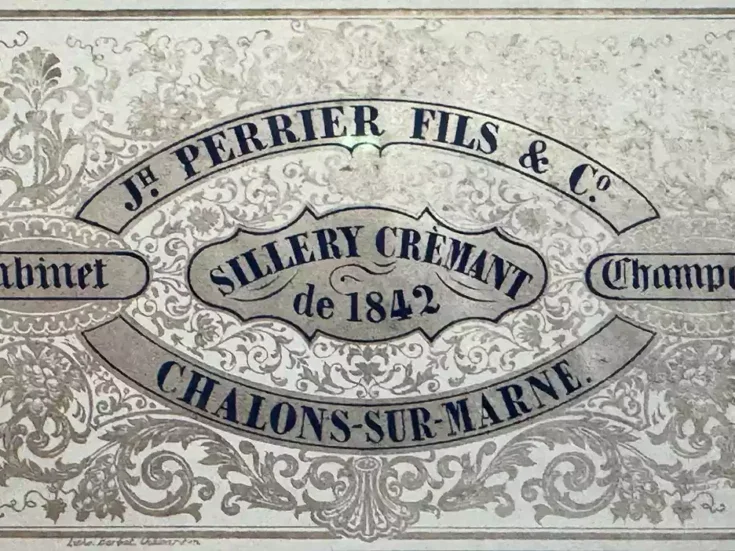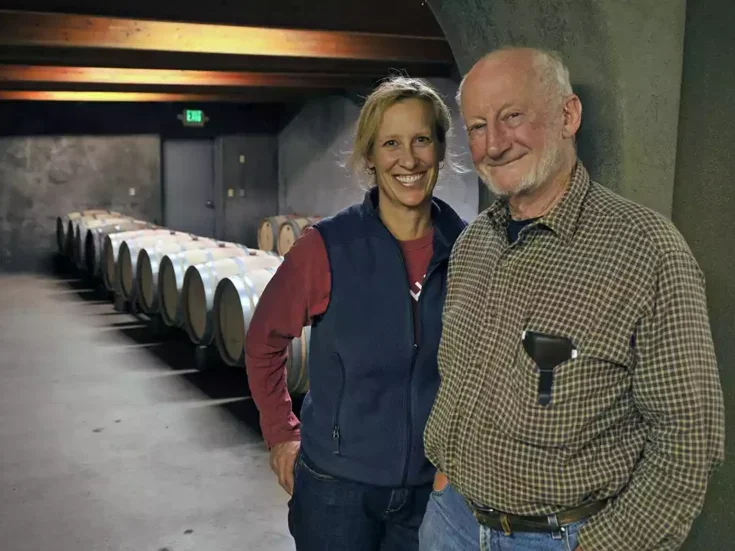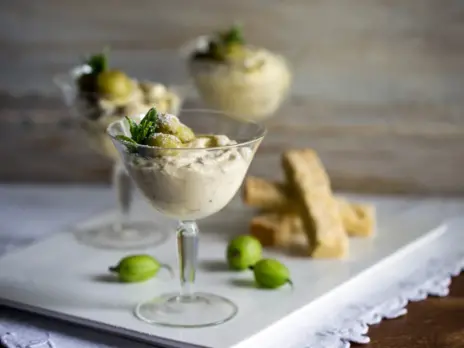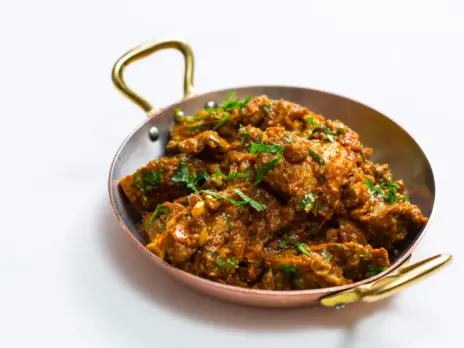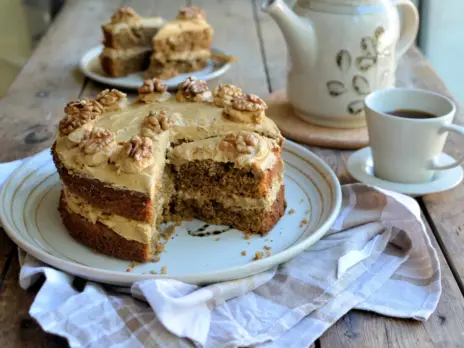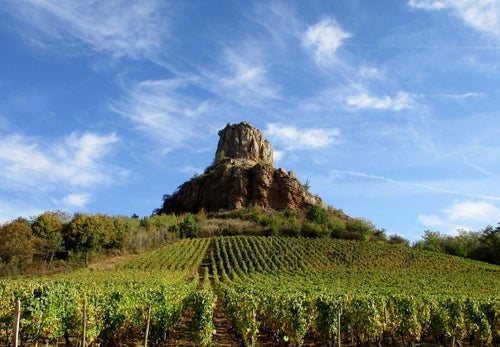
MÂCONNAIS
I moved directly from Chablis in June 2024, to Pouilly-Fuissé, and concentrated my review on the premiers crus, which are generally very pleasing—well-balanced and not overly heavy or concentrated. This is, however, terroir-dependent, and some premiers crus are a bit fat and tropical, while others—including some with higher alcohol and lower acidity—are much more vibrant. I found 2023 a better vintage here than in Chablis, and have given some quite high scores.
The 2023s here are quite like the 2022s. On balance, I preferred the 2023s (it was the other way around in Chablis), which have more freshness and intensity, but this is dependent on yields. The better producers I have included in this report have modest yields for this vintage. Most are working organically.
The style is accessible and fruit-forward. It’s another rich vintage, so I would tuck in early. After all, it’s not necessary to keep every vintage in the cellar. But if you feel compelled to cellar some premiers crus, the 2023s have medium-term aging potential—an average of around eight to ten years. I would drink 2023 before the richer 2020 and the more restrained 2021, which I feel are vintages with more aging capacity. Not all producers agree, though. Aurélie Cheveau, who has succeeded Frédéric Burrier as chairperson for the Union des Producteurs du Pouilly-Fuissé, considers that “a long aging is important to show the terroir in 2023.”
Quite a few producers compared 2023 with 2018: “Like 2018, but the style in 2023 is richer,” said Anthony Saumaize of Domaine Jacques Saumaize. But I wonder if this impression is rather more about the similarity in the harvest—the volume and pressure of processing the fruit—rather than a reflection on the style of the ’23s, which I think have a bit more depth than the ’18s.
Nicolas Cheveau, Aurélie’s husband and the winemaker at Domaine Cheveau, finds 2020, 2021, and 2023 all very similar. He has a point! Julien Barraud considers 2023 “less rich than 2022, the same profile as 2020.” While at Château de Beauregard, Baptiste Burrier remarked, “We finished harvest on the same day, September 21, in 2007, 2009, and 2014, so I feel it is in this family. The 2023 is more compact and longer than 2022. More interesting. More like the 2020 vintage than the past two vintages.”
So, what do the producers think of the 2023s’ aging potential? “I think you can drink the 2023 early, but it has enough acidity and alcohol for cellaring, although the 2021 will last longer,” says Anthony Saumaize. Pierre Morat agrees: “The 2021 has more potential. The 2023 is like the 2022 for its aging capacity,” but he points to other warmer vintages that he feels are showing the capacity to mature nicely. “The 2015 and 2017 were warm vintages and the premiers crus are still good.”
Baptiste Burrier is holding out for some really long-term aging for Vers Cras. “There’s great aging potential, because of the structure and the acidity is not too low. 2023 has balance. Vers Cras will age longer than Vignes Blanches. Recently we opened a bottle of 1981 Vers Cras, which is still very fresh and dynamic, and 1966 Vers Cras is not dead, but more oxidative.”
Mâconnais: Observations on the season and vinification in 2023
Topping and tailing Burgundy, the season was quite similar in Pouilly-Fuissé and Chablis. A good flowering was followed by conditions that brought some mildew pressure. Although it is not permitted to use herbicides when producing premier cru Pouilly-Fuissé, systemic sprays against mildew are allowed. I was told by Aurélie Cheveau that there are about 40 certified organic producers, among the 250 producers with some premier cru land, many of whom have just one tiny parcel. She added, “We have a big change in mentality in Pouilly-Fuissé.”
The rain in August was responsible for higher-than-average yields. “A bit too much, but well-balanced fruit,” observes Pierre Morat, who admits he prefers the 2021 vintage. As do most of the producers of Pouilly-Fuissé.
Ripening happened swiftly toward the end of August when a heatwave arrived. At Château de Beauregard, Baptiste Burrier remarked upon the 20 days of rain that presented problems getting into the vineyard to spray, especially in Vers Cras on the plateau where they lost 30%. “The key point in the Mâconnais was the rain and the impact of mildew. After the rain, it was nice and sunny, with an even ripening. The mildew affected the yields, but the grapes fell on the ground.”
Julien Barraud (this Vergisson domaine has been certified organic since 2022) recalls that it was quite easy in the vineyard for the second half of the summer, with the mildew pressure over in July, but the rain produced much more juice than in 2022. For many, this was a welcome problem in the winery, although the fruit came in a rush and it was difficult to keep up with the pressing. Julien Barraud recalls that he was able to press for only two hours rather than three or four.
Few, if any, producers in the Mâconnais have dedicated refrigeration spaces, relying instead on pressing the fruit as quickly as possible and cooling the must. “We have a very powerful cooling system,” says Pierre Morat. “We lower the juice to 15ºC (59ºF) before putting it into barrel.” Morat doesn’t add any SO2 at the press but depends instead on bio-protection. Didier Séguier, at William Fèvre in Chablis, also rates this as a means to protect the must: “The non-saccharomyces yeast is very effective in scavenging oxygen and helps protect against brett and bacteria,” says Morat, who introduces SO2 (3g per barrel) only after the MLF.
Most producers were out harvesting by September 5, by which time temperatures were 35–40ºC (95–104ºF). Anthony Saumaize recalled, “I wanted to start on August 31, but I had to wait for the pickers, so I started on September 3. In the vineyard, we have to learn how to protect the grapes, but choosing the date of the harvest is the most important decision.” Over in Fuissé/Pouilly, Baptiste Burrier said it was too hot to start harvesting (by hand) before September 5.
Although everyone spoke of the high yields, I didn’t taste any dilution (albeit focusing on premiers crus). Aurélie Cheveau told me that there was a VCI of 6ha/hl—the permitted excess beyond the statutory 56hl/ha for premier cru and 60hl/ha for village wine. More producers seemed to make use of this for their village wines than for premiers crus.
Nicolas Cheveau recalled, “There were a lot of grapes. We did a good debudding, but there was a very good flowering. We needed the sunshine to get the ripeness. But this saved the harvest. I think it is better balanced than 2022, which was too sunny and too hot.”
The 2022 is rather concentrated, while the 2023s have an easier harmony and balance—but there’s not much in it. My only criticism—here and there—is some softness. From my tasting of 19 producers of premier cru Pouilly-Fuissé, this seemed to be more attributable to the terroir than to the producer.
Given the high temperatures, the pHs were fairly good. Pierre Morat would expect a pH range of 3.15–3.2 before harvest in an “average” year, while 2023 was 3.2–3.3, which meant that after MLF the range was 3.3–3.38. Cheveau said his wines didn’t go above pH3.3, but someone else apparently has a wine at pH 3.5. Well, the numbers are one thing. As in Chablis, the balance can just as well be made with the sensation of minerality and sapidity.
But not everyone in Mâconnais was prepared to reply on this. Some producers elected to block the MLF in wines from some climats or partial cuvées within. I tried two samples for Vignes Blanches (same age of barrel and cooper) with Baptiste Burrier at Château de Beauregard. Baptiste decided to prevent the MLF on half of the cuvée. I gather that Frédéric Burrier was not convinced that it was a good idea, and I tend to agree. While the aroma was fresher, more fruity and floral, on the non-MLF wine, the apple-like acidity didn’t make it feel fresher than the sample which had MLF. In fact, I preferred the latter, which was fuller but punchier. It didn’t show so much in the final blend. In any event, the malic was low in 2023, so it wouldn’t achieve much more than making the wine taste a touch like Sauvignon!
Generally, alcohol levels are not excessive—around 13%—but be aware that it can be a bit heady on wines from south-facing slopes. Morat has 14% ABV in sunny Les Crays.
Is it a good year for foulage in Mâconnais? Some did it, others didn’t. Julien Barraud said, “It is better to extract more phenolics. This will help with the aging and, with it, 2023 premiers crus should age for about ten years.” Nicolas Cheveau also did a little. But Pierre Morat took the opposite approach, opting for a whole-bunch press, not least as he was wary of potassium and higher pHs in 2023.
Pierre Morat had a career as a professional winemaker working in several countries, before coming back to the family domaine, where he keeps a sharp eye on the winery. “It helps our pH to have everything hand-picked and not crushed before the press. And in 2023 I separated the end of the press.”
Moving on to élevage, there is a shift toward less new oak in Pouilly-Fuisse premiers crus, but clearly hesitancy in using larger format oak, although some are using demi–muids and foudres on village wines. Barraud uses 600-liter barrels for Mâcon and St-Véran. Pierre Morat is doing trials with 350-liter barrels.
At Jacques Saumaize, some foudres are used for village wines, but they are holding fast to barriques for premiers crus; a shame, I think, as I particularly liked the effect of the foudres on the Haut de la Roche, which allowed full rein to the teeth-squeaky minerality. This village wine normally going into barriques, and went into foudres only for logistical reasons.
Nicolas Cheveau, however, is using some 500-liter barrels for premiers crus: “They are very good for hotter vintages and keep the wine more reductive.” Quite right. He also uses foudres of 18hl—not for any 2023 premiers crus, but it seems he has this in mind fo the future. “I am going back to what my grandfather did.”
At Domaine Barraud, Julien keeps the wine for 11 months in oak, racking in June or July into stainless steel, then bottling the village wines before the following harvest and the premiers crus in November. But many others are going for a second winter and longer on the lees. Everyone commented on the health of the bourbes, with minimal settling needed. “I took all the lees in 2023,” said Nicolas Cheveau, “and I like a long aging. The second winter in stainless steel sharpens the wine. I like about 24 months.”
Nicolas Cheveau does no filtration or fining after the long aging and bottles with high levels of CO2—around 1,200mg/l, which is a level at which you can detect it. “I have 1,400 after aging, it’s all natural. Some people say I am mad, but I prefer to use more CO2 and less SO2 (total SO2 is approximately 70ppm, and free, 25ppm). Nicolas uses Nomacorc closures. Julien Barraud is also fed up with cork and uses some ArdeaSeal, so he can have just 20ppm SO2 at bottling, but he doesn’t like to use more than 800mg/l CO2.
Mâconnais: Roundup of the premiers crus
After another hot summer, and after the rain, premier cru Sur la Roche secures its place, showing brilliantly well with its straight palate, racy energy, and salty minerality. This profile is not, of course, everybody’s idea of premier cru Pouilly-Fuissé, but it is a style that appeals to me.
The Sur la Roche climat is pretty much on a plateau, angled slightly eastwards, although there is a section that has slight southerly incline at the southern end, where Saumaize-Michelin, for example, has vines. In the not-too-distant past this was considered marginal territory—just too high—but when the summer is warm, there is no better place. The altitude is 300–400m (1,000–1,300ft) and the vines have a pittance of topsoil before hitting the limestone mother-rock. Julien Barraud finds that it always has high levels of dry extract. He doesn’t find it as mineral as I do, but very citrusy.
Pierre Morat ascribes the expression of Sur la Roche to four things: the altitude, the wind, the soil, and the exposure. “Sur la Roche is mineral, tight, precise, and fresh, while Les Crays is deep, spicy, and rich.”
It is certainly worth mentioning Haut de la Roche—a parcel that didn’t make it into the premier cru classification. The INAO, in its wisdom, decided upon 400m as the altitude cut-off, above which it was deemed too high to qualify for premier cru. Prior to the new classification, those who had parcels in the higher section, including Jacques Saumaize and Gilles Morat, blended the parcels, so now they make them separately. At least they got to keep the climat name, albeit with the Haut prefix. In other cases, the excluded sections were demoted to Pouilly-Fuissé and lost their lieu-dit. Pierre Morat believes the Haut part is the best section of Sur la Roche: “It has good acidity, minerality, and elegance.”
Staying in Vergisson but moving onto the steep south-facing slope of the Vergisson Rock, premier cru Les Crays has the richness more typical of Pouilly-Fuissé. This, however—thanks be!—is underscored by firm sapidity. The topsoil is scree on this slope. This is a warm place—due to the gradient, the orientation, and the soil, which holds and reflects the heat—but equally it bestows a sense of minerality to balance the ripe fruit.
The Vergisson village benefits from the most pronounced diurnal range of the four communes, and while it has benefited from the added sunshine brought about by climate change, it should still have some freshness. From the sunny expositions, however, the style from Vergisson can be pretty rich. Those with more modest yields will have greater concentration and alcohol. Gilles Morat will not have been the only domaine with Les Crays at 14% ABV. But if I may refer you back to the Chablis notes, I feel we can draw a parallel between the styles of Les Cray and premier cru Vaucoupin. There are some very good wines from Les Cray in 2023, with the density to age well.
The premier cru at the bottom of the Vergisson rock is Maréchaude. The wines I tried from here were a bit too tropical and soft. It faces full-south, and here we are on much deeper soil. As Julien Barraud remarked, their cellar is hewn from the same ground as Maréchaude. Even several meters below the surface, there is no sign of the mother-rock. Moreover, there is iron in the soil. This shows in the heft of Maréchaude. I didn’t really like Maréchaude in 2023. The samples I tasted had very ripe, apricot flavors—almost jammy.
En France, a small premier cru in Vergisson, lacks distinction and freshness in 2023. On this showing, I am not sure why it was included among the premiers crus. But it is worth noting that there are some very nice lower-status vineyards on the cold, north side of the Rock, including En Chatenay.
There is a premier cru that vies for top position with Les Crays and Sur la Roche: Vers Cras (9.63ha [23.8 acres] in total, even though the section tilting to the north was excluded from the classification). My preference for Sur la Roche in 2023 is merely stylistic. Straddling the border of Solutré-Pouilly and Fuissé, which runs past the gate of Château de Beauregard, Vers Cras is pretty flat, and there was some debate about whether it was too flat to qualify for premier cru status.
Frédéric Burrier describes this as a “big plate of jurassic limestone, with a high proportion of active limestone. Vers Cras is made of Oxfordian superior limestone (Coralian)—that’s the younger Jurassic soil of the AOP. Due to the poor and stony calcareous soil, which is very thin, sometimes only 50cm [20 inches] deep, the style of Vers Cras is not opulent.” Given its high level of active limestone, sense prevailed at INAO and Vers Cras made it into the classification.
While steep, warm, south-facing slopes exacerbate the effect of the sun, a plateau has some advantages—not dissimilar to those of Sur la Roche, albeit without the altitude. There are also, however, some disadvantages. At Château de Beauregard, Vers Cras was the most difficult vineyard to work after the August rainfall, and it lost out to mildew, harvesting just 25–30hl/ha.
The wines of Vers Cras are broad rather than rounded, savory rather than fruity, and even when they are rich in 2023, they are underscored with stone-sucking sapidity. They are consistent in both style and quality. Domaines Saumaize-Michelin and Cheveau have top-notch examples. And of course, Ver Cras has aging potential—indeed, it is probably the most age-worthy premier cru.
I will also put in a word for premier cru Les Perrières, on a steepish slope in Fuissé. This produces relatively light-footed, straight, and neatly edged wines. While they are not strict and precise, as in a colder vintage, they hold their line in 2023. Not for long aging, though.
By contrast, from neighboring premier cru Vignes-Blanches—which in a cooler vintage is all about white flowers, with a pretty, rounded, slightly lacy profile—some 2023 wines morph into toffee-richness. Pierre Vessigaud, however, still managed to capture the elegance of this terroir, and Maxime Dutron has done a good job, too.
Just a little farther toward Pouilly, premier cru Les Ménétrières, on deeper clay, with a more east/southeast exposure, holds firm in 2023, producing fresher, more vigorous, and juicier wines.
Raising the status of the best terroirs in Pouilly-Fuissé took many years and was long overdue. The effect in the market has been much swifter, with an immediate upsurge in interest. “People knew Pouilly-Fuissé deserved to have premiers crus, but now they are more interested. It’s created a new market. There is an exclusivity about these vineyards now,” observes Pierre Morat.
Aurélie Cheveau sums things up: “We now have a distinction, a new importance. For the consumer, there is a new level, and for the producers, a recognition of the terroir.”
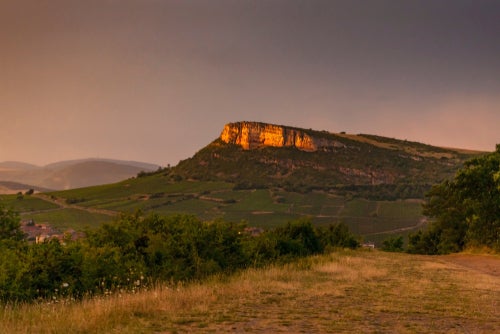
DOMAINE BARRAUD (VERGISSON)
The domaine was certified organic in 2022, although Julien and Anaïs’s parents have been working this way since 2005. Quite early bottling here, before the end of the year.
Pouilly-Fuissé Premier Cru En France
Richly floral, ripe-citrus palate, almost candied lemon, carrying into an aromatic finish. 2025–28. 87
Pouilly-Fuissé Premier Cru Sur La Roche
Savory, slatey mineral. This is keen and sharp. Pure and racy. Neatly focused. Lovely, long finish. 2026–33. 92
CHÂTEAU DE BEAUREGARD (FUISSÉ)
“A normal vintage, unlike 2021 and the 2022 heatwave,” said Baptiste Burrier. Ninety percent of this 60ha (150-acre) estate is hand-picked, using 80 harvesters. Some Mâcon terroirs are harvested by machine. “A vintage that is well-structured and balanced. 2022 was very hot, and 2023 is clearly better balanced. In this abundant sort of vintage, the combination of mildew and our organic viticulture was a good thing, because it moderated the yields.
Pouilly-Fuissé Premier Cru Les Crays
From a very small parcel here, which produces only three barrels. They finished the harvest here on September 18. It’s focused and sapid and has a salty sprinkle to finish. Longer on the finish than the Reisses. For the 2023 vintage, this Les Crays is rather refined. 2026–34. 89
Pouilly-Fuissé Premier Cru Les Ménétrières
Clay soil here. Peachy aroma, full and broad, with some density. Slightly tropical and almost earthy on the finish, but also fresh, tangy, and vibrant, so this is nicely balanced. 2026–32. 87
Pouilly-Fuissé Premier Cru Les Reisses
Zesty and sharp, this has a citrus slice and is straighter and saltier. Nicely focused. Some tension. 2026–30. 87
Pouilly-Fuissé Premier Cru Vers Cras
The smooth, wet-stone palate is entwined with honeysuckle richness. A savory sapidity underpins the palate and resurfaces on the finish. Not bad. 2026–35. 89–90
Pouilly-Fuissé Premier Cru Les Vignes Blanches
Half of the cuvée did not go through MLF. Quite soft and fragile mid-palate. Slightly honeyed, but it has some freshness, maybe a touch apple-like, then maybe toffee-apple on the finish. 2025–30. 86–87
BAYON MANOIR DU CAPUCIN (FUISSÉ)
Chloé Bayon is at the helm of this estate. Vineyards have been on long-term leasehold for the past two generations.
Pouilly-Fuissé Premier Cru Les Brûlés
From a warm place, as the name suggests, in Fuissé, south-facing and with limestone soil. Some oak is showing on this glossy, slightly tropical wine. Ample, generous, and succulent, with a touch of tannin and apricot skin to give a light savory bite on the finish. 2025–30. 87
Pouilly-Fuissé Premier Cru Le Clos de Solutré
I like the phenolic edge on this wine. There is attractive bitterness, which punches into the richness and density. This wine isn’t really fruity—it’s more savory. Decisive finish. Potential to age. 2026–35. 89–90
DOMAINE CHEVEAU (SOLUTRÉ)
I was impressed with the wines from this domaine. I met Aurélie and Nicolas for dinner in Solutré and tried a few other vintages and wines. They are a sixth-generation producer in Beaujolais, in St Amour, and more recently, renting first, in the Mâconnais, where Nicolas and Aurélie have 5.6ha (14 acres) and five premiers crus. Nicolas Cheveau builds his premiers crus to age.
Pouilly-Fuissé Premier Cru Aux Chailloux
Supple up-front. Fruity and forward, it could seem a little simple, were it not for the lively, silky minerality. There is a fluidity to this wine. Ripples elegantly on the palate. Polished minerals. 2026–33. 90
Pouilly-Fuissé Premier Cru Pouilly
Punchy and dense. Overwhelmed by the spices—caraway and licorice, probably from the oak. There is sapidity to finish, but just too much oak, at least for me. Shame. 2026–32. 87
Pouilly-Fuissé Premier Cru Vers Cras
An immediate wet-stony impression. Strong juxtaposition of cold minerals and the warmth of fruit. There is breadth mid-palate, yet it finishes with cold gunflint. My favorite at this domaine and a top-notch Pouilly-Fuissé for the vintage. 2027–35+. 92–93
Beaujolais-Villages Chatenay
“We don’t like modern Beaujolais,” says Aurelie, “it is too light.” This, their entry-level wine, is super-juicy and generous. Yummy. 2024–26. 80+
DOMAINE CORNIN (CHAINTRÉ)
Working biodynamically, father and son team with a ten hectare estate.
Pouilly-Fuissé premier Cru Les Chevrières
Some breadth on the front palate. Good drive and savoury minerals. There is richness of fruit mid palate with a touch of apricot, but all is well harnessed and I like the vigour and smoky notes to finish. 2026–33. 89–90
DOMAINE CORSIN (DAVAYÉ)
13.5 hectares and fifth generation.
Pouilly-Fuissé premier Cru Aux Chailloux
Rich and aromatically spicy. A florid, full blown fruity palate. Will appeal to those who like a richer more exotic style. 2024–28. 86
GUILLAUME CURVEUX (FUISSÉ)
Accessible fruit forward and pleasurable for early drinking.
Pouilly-Fuissé Premier Cru Les Ménétrières
Much fresher than Vignes Blanches. Decent energy. More savory than fruity. Rounded but not at all heavy. There’s an attractive savory note. Slightly dark and gravelly at the end, which I like. 2025–28. 87
Pouilly-Fuissé Premier Cru Vers Cras
This is certainly the best premier cru at this domaine. On the more exotic and rich side, but underpinned with lovely, fresh, cold mineral bite, which carries this wine to a longer finish. More aging potential here for sure. 2026–34. 87–88
PIERRE DESROCHES (VERGISSON)
There are some interesting wines here. The domaine was founded in 2005 and has been organic since 2022
Pouilly-Fuissé Premier Cru La Frérie
Interesting herbal notes. This is quite intriguing. There is plenty of freshness with ripeness. It’s sprightly and much leaner than the Vignerais. A hint of pea-shoot, which I quite like, for it brings a crisp sensation. 2026–32. 89
Pouilly-Fuissé Premier Cru En Servy
A petrol-fresh Riesling aroma and lime zip on the palate. Racy and bright, lively acidity and minerality. Pure and straight. Singing and super-salty to finish. Wiry and well-sustained. A light-footed, high-toned wine, with some precision. Fruity, light, stylish, and breezy. 2026–34. 88–89
DOMAINE JA FERRET (FUISSÉ)
Spot-on typicité. Translucency to the terroir. Some aging potential, too. The domaine has 17ha (42 acres) in Pouilly-Fuissé, all hand-harvested. Part of the Jadot group since 2008.
Pouilly-Fuissé Premier Cru Les Ménétrières
This climat has the highest proportion of clay of all the Fuissé vineyards. A burly-bodied and more ferrous wine. Chunky and fresh. While the Perrières is lean and straight, this is fuller. Maybe the Perrières is longer, but I can’t help liking both of them. 2026–33. 89
Pouilly-Fuissé Premier Cru Les Perrières
A lovely example. It’s light, racy Pouilly-Fuissé, with snowflakes and salt on the finish. I like this style of Pouilly-Fuissé. Not profound but you will drink the bottle. 2026–33. 89
Pouilly-Fuissé Clos des Prouges
Rich, crystalized fruit, lemon, and ginger on this rather sumptuous, rounded, and honeyed Pouilly-Fuissé, which ends on a sweet, toffee-like note. Really all in the first impression: rich and expressive. 2025–27. 85–86
CHÂTEAU FUISSÉ (FUISSÉ)
When I tasted the wines in June they were going through an oxidative moment and maybe too much oak but definitely showed some potential. The domaine owns 40ha (200 acres) in the Mâconnais.
Pouilly-Fuissé Premier Cru Les Clos
Monopole in Fuissé. Power and intensity and sapidity to finish is impressive. This is very ripe, concentrated, almost caramelized orange and ginger. It’s rich but sapid. Lots of stuff and matter. 2026–35. 89
GILLES GUERRIN (VERGISSON)
Sylvie and Gilles came to Vergisson in 1984 and are now making wine with their daughter Brandine.
Pouilly-Fuissé Premier Cru Sur La Roche
This is singing and bright. No lack of verve. Its light, straight, salty, and nervy, and it just fizzles on the finish. It’s not a wine for long-term aging, but I just love this stylish, delicate, crisply edged and pure wine. 2026–32. 89
DOMAINE LES HÉRITIERS DU COMTE LAFON (MILLY-LAMARTINE)
Harvest started here on September 1. “Slow-ripening and then very fast,” says Pierre Lafon. The domaine own 27ha (66 acres) in the Mâconnais and produces 150,000–180,000 bottles.
Mâcon–Bussières Le Monsard
From a lower altitude and west-facing vineyard. Richer, earthier, grippier, and with more tension than the Milly-Lamartine. 2025–28. 85
Mâcon–Chardonnay Clos de Crochette
Two km from Uchizy. Supple and silky and quite refined with a soft, creamy salt finish. 2025–28. 85
Mâcon Milly-Lamartine
From a higher (400m [1,300ft]), east-facing parcel. This is usually the last to be harvested—this year on September 12. It was started in tank and then moved to foudres and 45hl tanks. Tight and bright, with a lime-fresh citrus note and a cool finish. Light and pretty. 2025–28. 84
Mâcon Milly-Lamartine Clos du Four
From a parcel at 270m (880ft), with better exposure to the sun than that for the other cuvée of Milly-Lamartine, this shows more depth, grip, and tension, and pushes into the finish. 2027–30. 86
Mâcon Uchizy Les Maranches
Soft, ripe, juicy, and slightly exotic. 2025–27. 82
St-Veran
Good intensity on this straight palate, with its stony note and savory minerality to finish. A step up. A blend of three parcels. Jolly good. 2027–30. 86–87
Viré-Clessé
Vibrant and citrus-fresh, with a generous richness of fruit, but I prefer the savory St-Veran. 2027–30. 86
DOMAINE GILES MORAT (VERGISSON)
I loved the wines here. The domaine extends over 7.2ha (17.8 acres) and is fully organic. Pierre settled into the family domaine in 2020 (his grandfather was a grower and his parents are still fully involved) after working abroad as a professional winemaker. He has decreased the proportion of new oak, to 10–15%, and also the amount of added SO2 in the winery.
Pouilly-Fuissé Haut de la Roche
Bright and citrusy, high-toned, piano-wire wine, lean and twangy, with a saline finish. Spot-on. 2025–30+. 88
Pouilly-Fuissé Premier Cru Les Crays
From a mid-slope parcel, this shows the richness of the sunny exposure. It’s very intense. A concentration of fruit and salinity, for it’s certainly eye-wateringly salty and sapid. Quite impressive on the finish, too. A lot on the mid-palate. Good combination of density, power, and minerality. Top-notch. 2027–38. 92–93
Pouilly-Fuissé Premier Cru Sur la Roche
Keen and lean and stretched. Edgy and saline. Quite severe. Very lean. Whiplash finish. 2026–35. 91
DOMAINE DE POUILLY (SOLUTRÉ)
A more traditional style of Pouilly-Fuissé from fifth-generation Vincent et Pierre-Antoine Besson.
Pouilly-Fuissé Premier Cru Pouilly
Rich, rounded, oaky, and generous. Luscious and on the softer side, making it very accessible. A touch of toffee to finish. 2024–28. 83
DOMAINE JACQUES SAUMAIZE (VERGISSON)
Anthony Saumaize sped in on his tractor, late for the appointment—which was understandable, because in June when I visited, the pressure of mildew was high. He joined his parents in 2012, bringing 3ha (7.5 acres) of his own vines. He is using some foudres and larger barrels for the village wines, including the stylish Haut de la Roche, and is also experimenting with glass globes. Certified organic from the 2024 vintage.
Pouilly-Fuissé Haut de la Roche
Tight, bright, delicate, and singing. Edgy. I like the freshness and vibrancy from foudres. 2025–30. 88
Pouilly-Fuissé Premier Cru Sur la Roche
Bright and tight, lean and pure. A keen sweep laced with a light glow of ripeness. It’s quite delicate, and on the finish has a pleasingly edgy, metallic minerality. 2026–32. 91
DOMAINE SAUMAIZE-MICHELIN (VERGISSON)
There has been biodynamic farming here since 2005. Impressive wines, with notable depth and terroir distinction.
Pouilly-Fuissé Premier Cru Les Crays
A lovely balance of richness and savory minerality. On the richer side, but after the density, there is salty persistence. 2026–25. 92
Pouilly-Fuissé Premier Cru Sur la Roche
Fizzles with energy. Zesty, straight, salty, and precise. I love the salinity on the finish. Maybe the finish on Les Crays is longer. 2026–33. 91
Pouilly-Fuissé Premier Cru Vers Cras
Rich and ripe attack. Sapid and savory. This has depth and punches into the finish, ending with an oyster-shell smoky note. Really quite good. There is certainly the potential to age this. Among the top two Pouilly-Fuissé wines I tasted in 2023. 2026–35+. 93
DOMAINE TROUILLET (SOLUTRÉ)
The 20ha (50 acres) or so of this domaine are managed by forth-generation William Trouillet.
Pouilly-Fuissé Premier Cru Aux Chailoux
A bit oxidative when I tasted it, but I like the sweetness and the salty/silky feel. Promising. 2026–30. 87
Pouilly-Fuissé Premier Cru La Frérie
Slightly acerbic. Catches the attention. Lean, tight, and metallic in an interesting way. 2026–30. 87
Pouilly-Fuissé Premier Cru Vers Cras
Definitely the best of the six wines here. Sapid and tense. Good bitterness. Phenolic bite. Savory wine with a pithy finish. 2026–32. 88
MAISON VERGET (SOLOGNY)
Julien Desplans, Jean-Marie Guffens’ winemaker and right-hand man since 2006, recalled that the major difference between the Côte d’Or and the Mâconnais in 2023 was the rain. There was less rain in the Mâconnais in late-July and into August, allowing the fruit to concentrate. Verget uses bought-in fruit, so there was no crop-thinning. The fruit is crushed before pressing: “We want to get the juice quickly and we don’t turn it in the press, so we must crush first. They use a vertical press, and Julien divides the press into three fractions: the first has lower pH and is rich with sugar, but he says by fractioning the press he will keep lower pHs overall. The pH after malo was 3.2–3.25, so it is low for the vintage. Julien finds the 2023 Verget wines as being between the 2020 and the 2022 in style, although he says 2022 was not reductive at all, while 2020 was very reductive and mineral. He says the 2023 Verget négoce wines are not of the same quality as the 2020s, but the domaine wines are. I have notes here on six of the 12 wines I tasted.
Mâcon–Pierreclos Lieu Secret
This is so-called because Jean-Marie Guffens prefers not to divulge the grape source. The vines are not owned by the domaine, hence it goes under the Verget label, but they do adjoin the domaine’s Chavigne vineyard. This was the first among the six wines that showed real tension. Really quite reductive and smoky on the nose, then compact, tight-knit, and ripe on the palate, with some body and punch. Neatly edged. 2025–35. 87
Mâcon–Pierreclos Verget
From old vines in the village of Pierreclos, matured in stainless steel. This has a pure, fresh-citrus aroma and the palate shows lightly creamy minerality, sweetness mid-palate, and a vibrant steely twang on the finish. 2025–30. 87
Mâcon-La-Roche–Vineuse Les Bois Joyaux
From old vines on limestone soil with a southern exposure, which is evident in the ripe, peachy aromatics and a certain glossiness of texture combining with ripe stone fruit on the palate. It purrs contentedly; rich but streamlined. Miso saltiness balances the sweetness. 2025–33. 87
Mâcon–Vergisson Sur la Roche
From a north-facing section of the Sur la Roche vineyard. The white-flower, wafting aroma dances into a sweet, saline palate. Lime pith on the attack. Delicate, straight, racy palate, with a shivering finish. 2025–34. 87–88
Pouilly-Fuissé Haut de la Roche
A pure and floral aroma, then a reserved and salty palate, with keen minerality and zesty citrus fruits. This lively wine shimmers on the finish. 2025–25. 89
Pouilly–Fuissé Premier Cru Sur la Roche
A rich expression in the 2023 vintage, this certainly has power and body, which combines with depth of texture, but through this a steely core carries the wine to a cool and vigorous finish. 2025–36. 91
DOMAINE PIERRE VESSIGAUD (POUILLY)
I found the wines here intriguing and distinctive. Pierre Vessigaud works his domaine, which includes 5ha (12 acres) in Pouilly-Fuissé, organically, and he plows by hand. He gives the wines 12 months in older oak, followed by time in stainless steel, to produce wines that are precise and translucent to the terroir.
Pouilly-Fuissé Premier Cru Les En Vignes Blanches
The freshest aroma from this terroir: delicate and lifted, with white flowers. Such freshness, energy, and piquancy. Skips brightly. A bit ephemeral as it dances off the palate, but this is a delightful wine and captures the elegance of this premier cru, which was not easy to do in 2023. 2026–33. 91
Pouilly-Fuissé Premier Cru Les Reisses
An up-right aroma, then grip and tension on the palate. A certain coolness. I like the reserve and intensity. 2026–33. 91
CHÂTEAU VITALLIS (SOLUTRÉ)
Rather elegant wines are made here by Maxime Dutron.
Pouilly-Fuissé Premier Cru Les Perrières
A delicate, pure, wet-stone aroma, then an elegant, sweeping, finely textured, silky palate, with a high-wired vibrating finish. Precise and pretty. 2026–35. 89
Pouilly-Fuissé Premier Cru Vignes Blanches
This is floral, broader, and a bit softer. Quite an airy, open, fluffy palate. Perfumed on the finish. Softer and lighter in intensity. 2025–30. 88–89
2023 Burgundy: A guide to the villages and vineyards
2023 Burgundy: Chablis with a sunny disposition
2023 Burgundy: Chablis tasting notes
2023 Burgundy tasting notes: Côte de Nuits—Marsannay and Fixin
2023 Burgundy tasting notes: Côte de Nuits—Gevrey-Chambertin
2023 Burgundy tasting notes: Côte de Nuits—Morey-St-Denis
2023 Burgundy tasting notes: Côte de Nuits—Nuits-St-Georges
2023 Burgundy tasting notes: Côte de Beaune—Beaune
2023 Burgundy tasting notes: Côte de Beaune—Pommard
2023 Burgundy tasting notes: Côte de Beaune—Volnay
2023 Burgundy tasting notes: Côte de Beaune—Meursault
2023 Burgundy tasting notes: Côte de Beaune—Monthelie and Auxey-Duresses
2023 Burgundy tasting notes: Côte de Beaune—Puligny-Montrachet and St-Aubin
2023 Burgundy tasting notes: Côte de Beaune—Chassagne-Montrachet
2023 Burgundy tasting notes: Côte de Beaune—Santenay and Cheilly-lès-Maranges
2023 Burgundy tasting notes: Côte Chalonnaise

